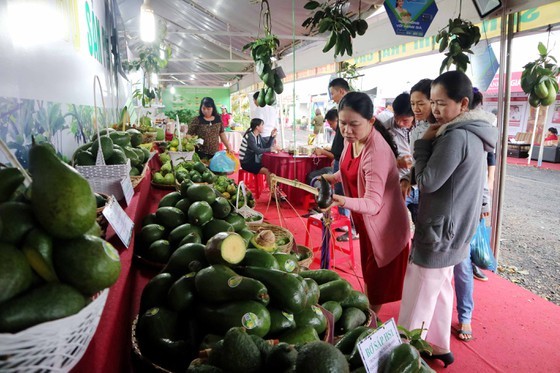
The Agro Processing and Market Development Authority, under the Ministry of Agriculture and Rural Development (MARD), collaborated with the Vietnam Fruit and Vegetable Association and the Chinese Consulate General in Ho Chi Minh City held the international seminar to exchange information on market regulations and control import and export of fruits and vegetables between Vietnam and China on October 27 in HCMC.
According to the Department of Crop Production, at present, the growing area of avocado trees is increasing many times higher compared to three years ago. Avocado is a perennial industrial cultivar that bears fruits after three years of growing and produces fruits for many years, so provinces must have plans and cannot develop avocado cultivation massively. Besides, Vietnam's avocado varieties do not meet the standards of size and quality for export to the US and EU markets. For the Chinese market, there is no negotiation roadmap for the legal export of avocados. Therefore, enterprises, provinces, and farmers need to learn carefully before developing avocado trees.
According to the MARD, from the beginning of this year to the end of September, the total import and export turnover of agricultural products between Vietnam and China exceeded US$9.8 billion, down 8.6 percent over the same period last year. Most of the main export items of Vietnam to China slumped. Specifically, vegetables and fruits reached $1.4 billion, down 25.9 percent. Currently, only nine types of fresh fruits from Vietnam are allowed to be imported through the official channel into the Chinese market, including dragon fruit, watermelon, lychee, longan, banana, mango, jackfruit, rambutan, and mangosteen. Besides durian, which is in the process of completing procedures, the ministry will continue to promote the market opening process in the order of priority of pomelo, passion fruit, avocado, custard apple, coconut, cardamom, and pineapple. At the same time, it will sign a protocol to open the market for grass jelly and sweet potato.
Regarding the issuance of codes for the Chinese market, according to the Department of Plant Protection, 47 provinces have submitted requests with 1,735 codes of growing areas, an area of over 180,000 hectares for nine fresh fruits, and 1,832 codes of packing facilities. Of these, the Mekong Delta region has 628 codes of growing areas and 924 codes of packing facilities for export to China.
According to the Department of Crop Production, at present, the growing area of avocado trees is increasing many times higher compared to three years ago. Avocado is a perennial industrial cultivar that bears fruits after three years of growing and produces fruits for many years, so provinces must have plans and cannot develop avocado cultivation massively. Besides, Vietnam's avocado varieties do not meet the standards of size and quality for export to the US and EU markets. For the Chinese market, there is no negotiation roadmap for the legal export of avocados. Therefore, enterprises, provinces, and farmers need to learn carefully before developing avocado trees.
According to the MARD, from the beginning of this year to the end of September, the total import and export turnover of agricultural products between Vietnam and China exceeded US$9.8 billion, down 8.6 percent over the same period last year. Most of the main export items of Vietnam to China slumped. Specifically, vegetables and fruits reached $1.4 billion, down 25.9 percent. Currently, only nine types of fresh fruits from Vietnam are allowed to be imported through the official channel into the Chinese market, including dragon fruit, watermelon, lychee, longan, banana, mango, jackfruit, rambutan, and mangosteen. Besides durian, which is in the process of completing procedures, the ministry will continue to promote the market opening process in the order of priority of pomelo, passion fruit, avocado, custard apple, coconut, cardamom, and pineapple. At the same time, it will sign a protocol to open the market for grass jelly and sweet potato.
Regarding the issuance of codes for the Chinese market, according to the Department of Plant Protection, 47 provinces have submitted requests with 1,735 codes of growing areas, an area of over 180,000 hectares for nine fresh fruits, and 1,832 codes of packing facilities. Of these, the Mekong Delta region has 628 codes of growing areas and 924 codes of packing facilities for export to China.
























